FSP Hydro G 650 Power Supply Review
FSP recently released a new PSU platform that mostly addresses gamers. The Hydro G line includes three units, and today we're testing the 650W version. The PSU is 80 Plus Gold certified and features fully modular cabling. Let's see how it performs.
Why you can trust Tom's Hardware
A Look Inside And Component Analysis
Parts Description
Before proceeding with this page, we strongly encourage you to a look at our PSUs 101 article, which provides valuable information about PSUs and their operation, allowing you to better understand the components we're about to discuss. Our main tools for disassembling PSUs are a Thermaltronics soldering and rework station, and a Hakko 808 desoldering gun.
| Primary Side | |
|---|---|
| Transient Filter | 4x Y caps, 2x X caps, 2x CM chokes, 1x MOV |
| Inrush Protection | NTC Thermistor & Relay |
| Bridge Rectifier(s) | 1x |
| APFC MOSFETs | 2x STMicroelectronics STFI24N60M2 (650V, 12A @ 100 °C, 0.19 ohm) |
| APFC Boost Diode | 1x STMicroelectronics STTH8R06FP (600V, 8A @ 85 °C) |
| Hold-up Cap(s) | 1x Nippon Chemi-Con (420V, 270uF, 2000h @ 105 °C, KMQ) 1x Rubycon (420V, 220uF, 3000h @ 105 °C, MXG) |
| Main Switchers | 2x Infineon IPP60R190C6 (650V, 12.8A @ 100 °C, 0.19 ohm) |
| APFC Controller | Infineon ICE2PCS02 Supporting ICs: TS358CD - LM393 |
| Switching Controller | Champion CM6901T2X |
| Topology | Primary side: Half-Bridge & LLC Resonant Converter Secondary side: Synchronous Rectification & DC-DC converters |
| Secondary Side | |
| +12V MOSFETs | 2x Toshiba TPHR85 04PL (SOP Advance Series, 40V, 150A @ 25 °C, 0.85 mohm) |
| 5V & 3.3V | DC-DC Converters: 6x International Rectifier IRLR8726PbF FETs (30V, 61A @ 100 °C, 5.8 mohm) PWM Controller: 1x Anpec APW7159C |
| Filtering Capacitors | Electrolytics: 1x Rubycon (105 °C), Chemi-Con (105 °C, KZE, KY series) Polymers: Teapo (Taiwan) |
| Supervisor IC | SITI PS223 (OVP, UVP, OCP, SCP, OTP ) |
| Fan Voltage Convertor | APW9008 |
| Fan Model | Power Logic PLA13525S12M (12V, 0.40A, 111.1 CFM, 41.6 dB[A], Hydro Dynamic Bearing) |
| 5VSB Circuit | |
| Rectifier | IRFR1018E (60V, 56A @ 100 °C, 8.4 mohm) |
| Standby PWM Controller | Power Integrations SC1226K |
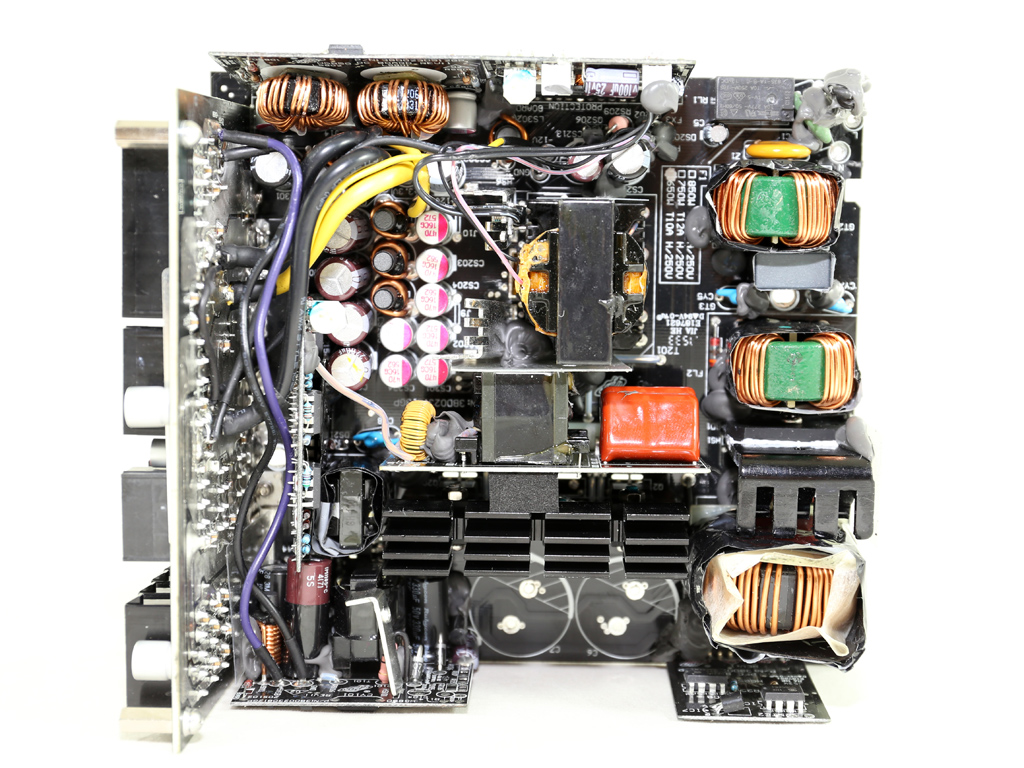
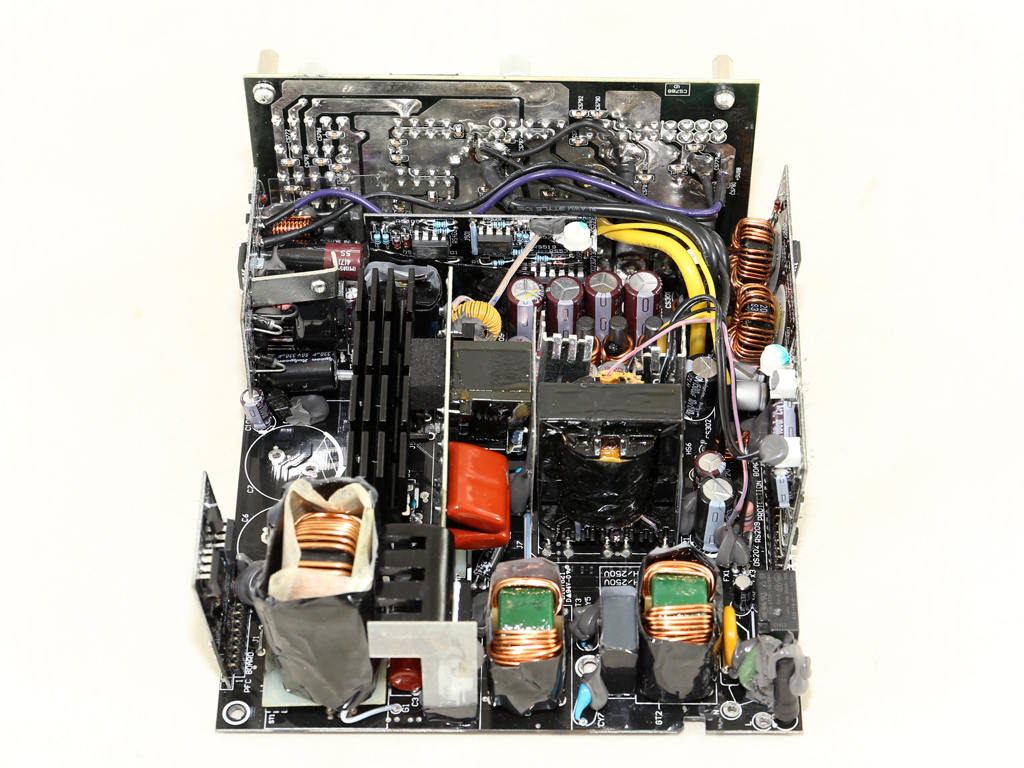


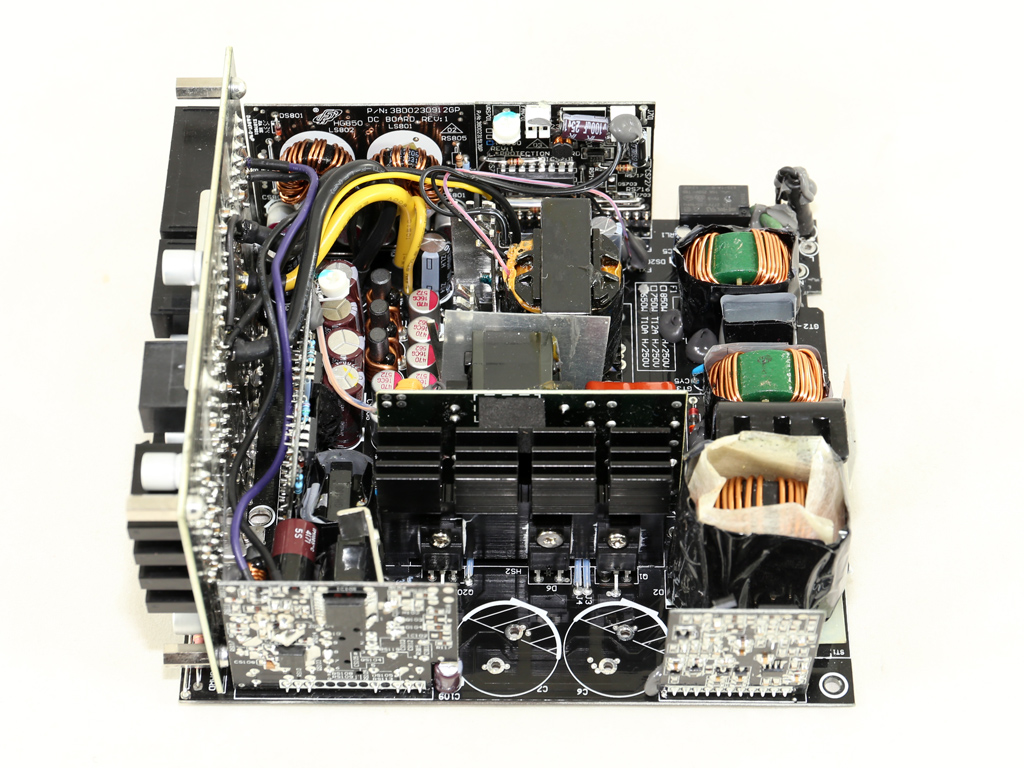
This is a fresh platform from FSP that uses a half-bridge design in the primary side along with an LLC resonant converter. We find the usual stuff on the secondary side: a synchronous design for generating the +12V rail and a pair of DC-DC converters for the minor rails. There are no large heat sinks on the secondary side, since the +12V FETs are primarily cooled by the chassis. We also noticed a board right next to the main transformer hosting the LLC resonant converter's parts.

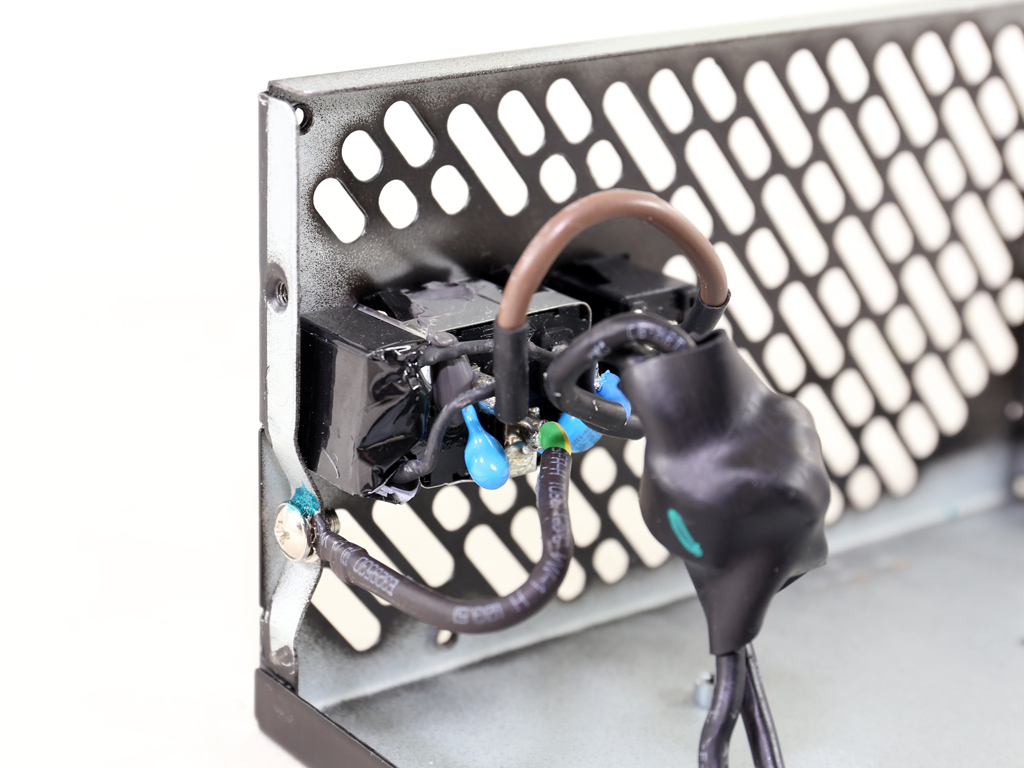
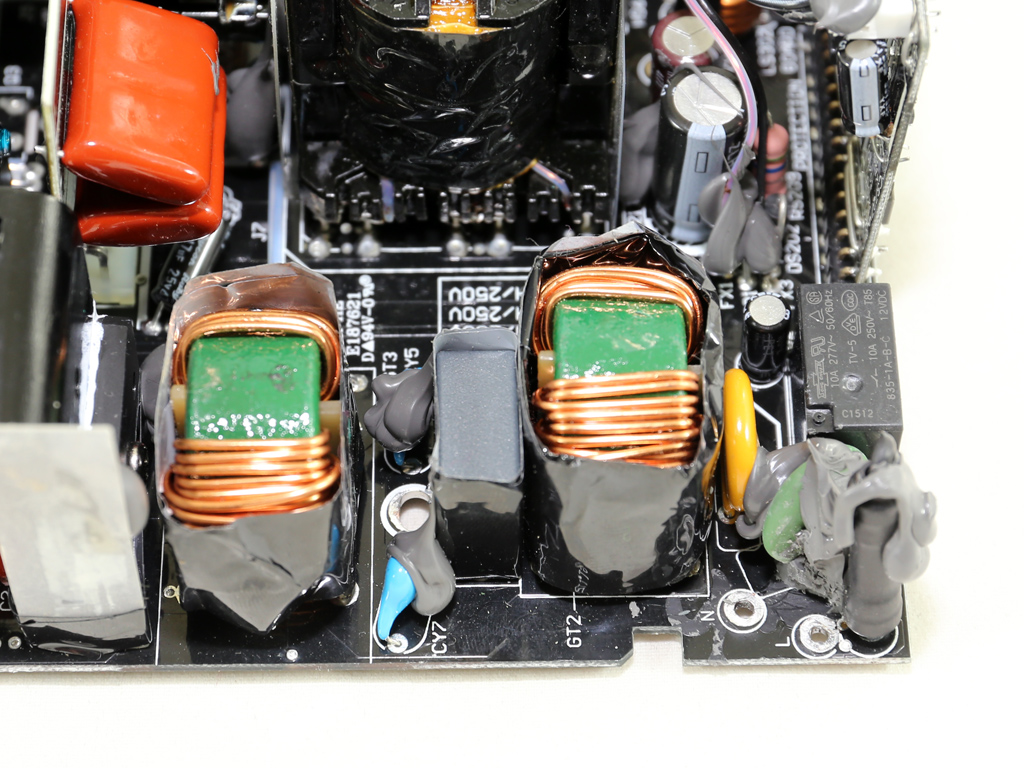

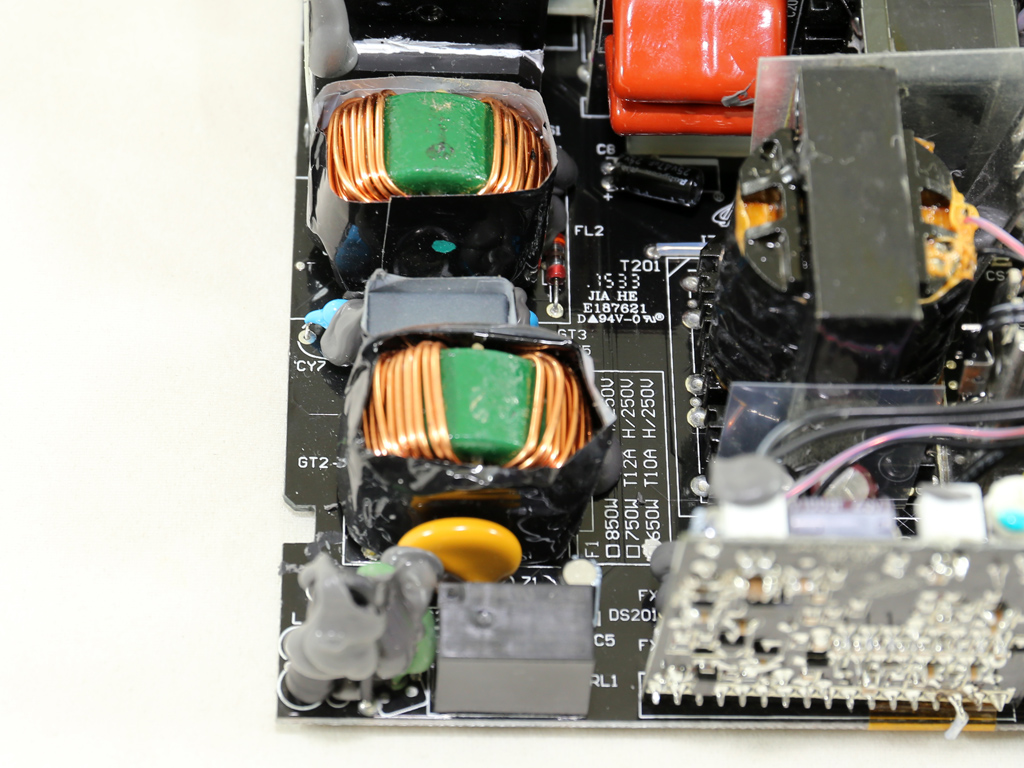

The AC receptacle houses the first part of the EMI filter, which consists of two Y caps and a single X cap. On the main PCB, we find the other transient filter components, including two CM chokes, a pair of Y caps along with a single X cap and an MOV (Metal Oxide Varistor). There is also an NTC thermistor for protecting against large inrush currents. It's supported by an electromagnetic relay that allows it to cool down quickly. Finally, the single bridge rectifier is bolted on a small, dedicated heat sink.
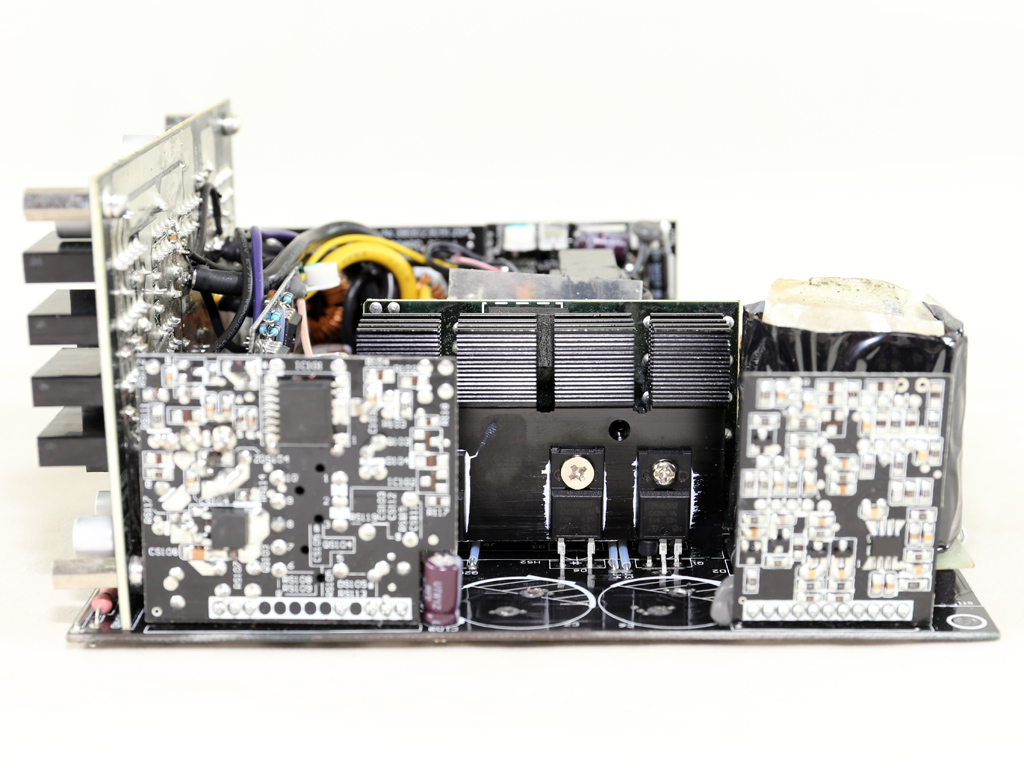
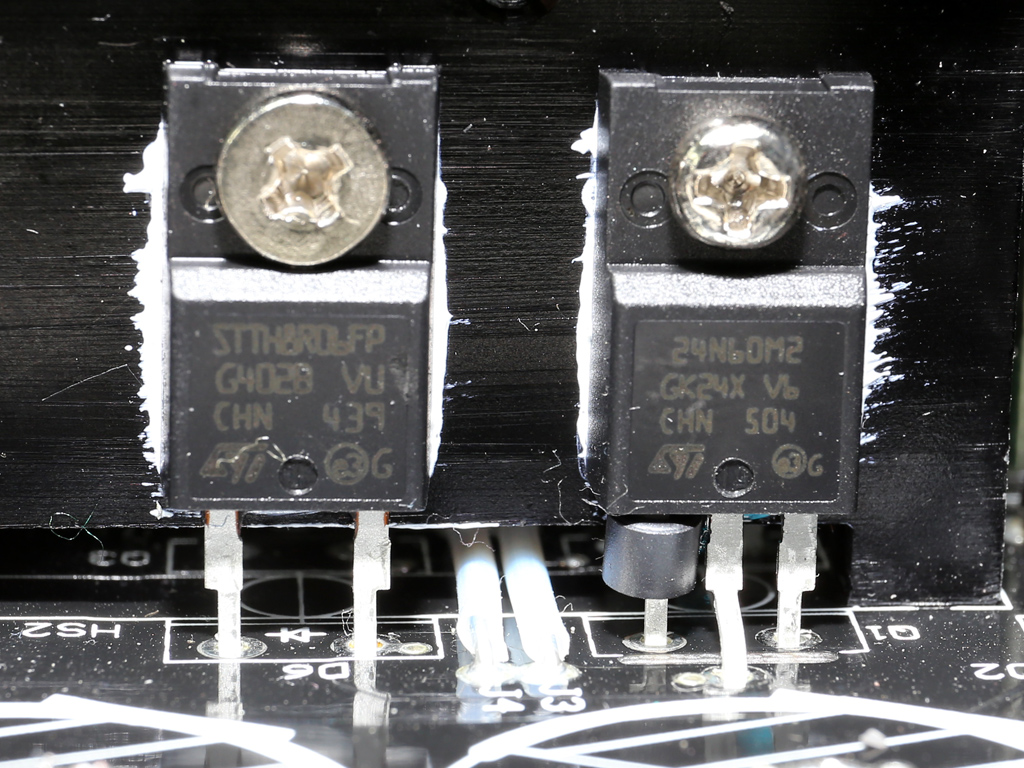
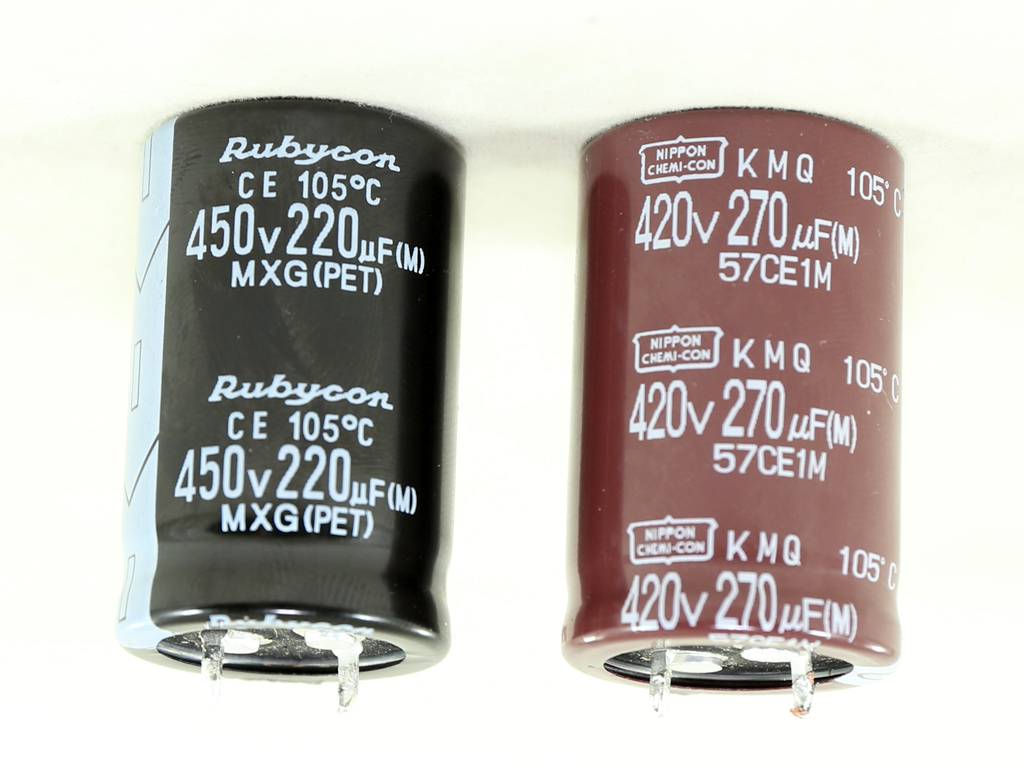
In the APFC converter, two STMicroelectronics STFI24N60M2 FETs are used along with a single STTH8R06FP boost diode. The HG750 uses three STF18N60M2 FETs and a STTH12R06FP in this stage. The bulk caps are Chemi-Con KMQs with 270uF capacity and a higher-quality Rubycon MXG with 220uF capacity. In total, their capacity adds up to 490uF. The combined capacity of the HG750's bulk caps is 660uF.

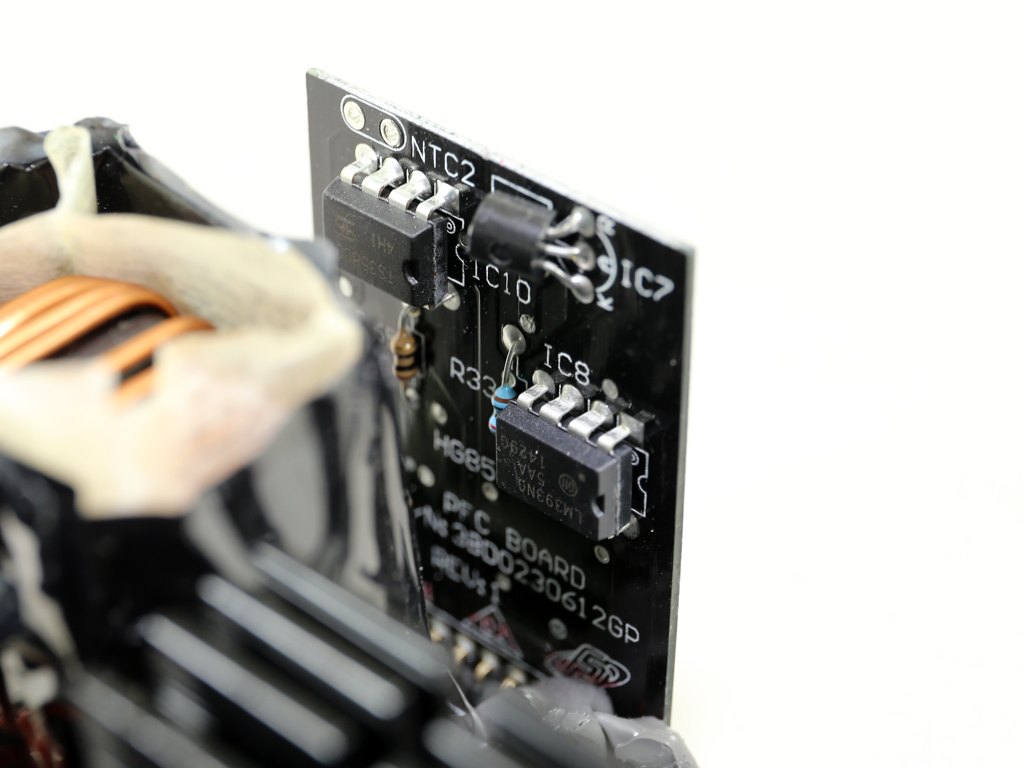
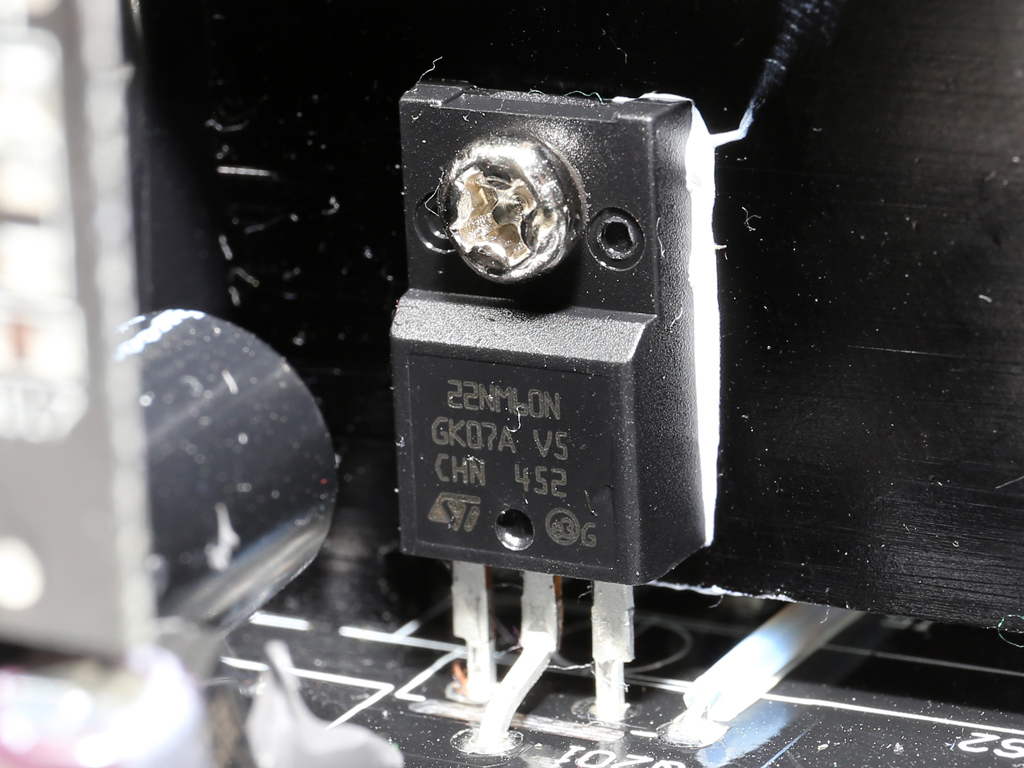
The APFC controller, an Infineon ICE2PCS02, is installed on a small vertical PCB along with two supporting ICs, op-amps, a TS358CD and an LM393. After the APFC converter we find the main switchers, two Infineon IPP60R190C6 FETs, arranged into a half-bridge topology.
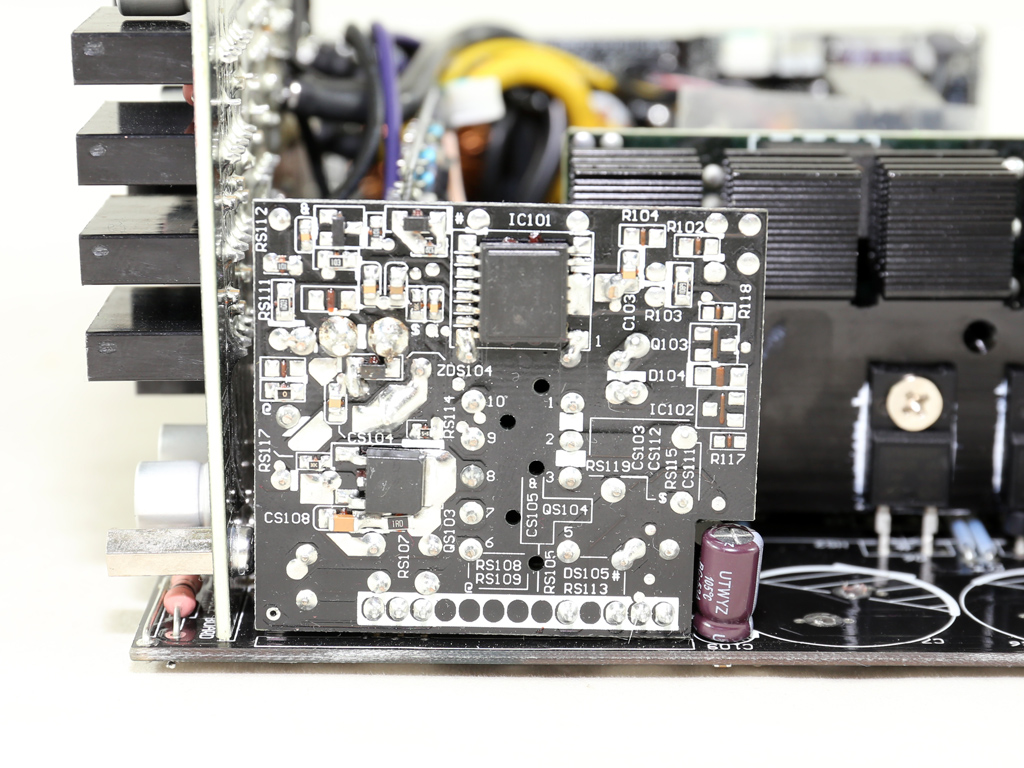


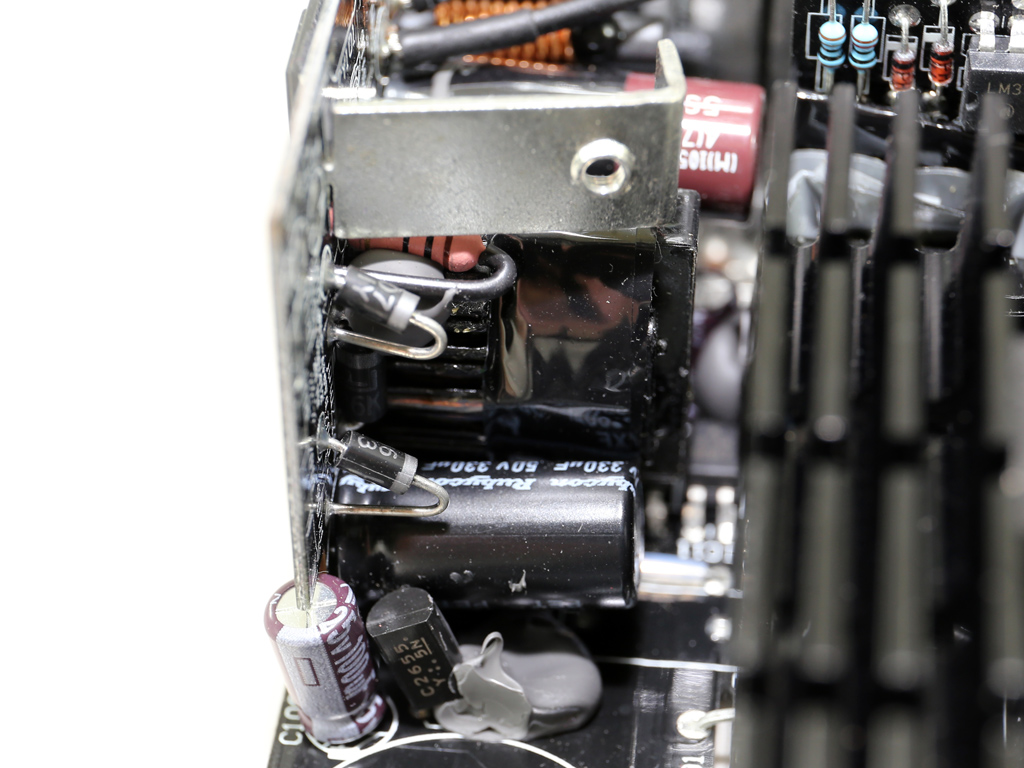
FSP uses a dedicated PCB housing several interesting components to generate its 5VSB rail. The PWM controller is a Power Integrations SC1226K, and the FET that actually regulates the rail is an IRFR1018E by International Rectifier. This board does an amazing job, giving the HG650 its highly efficient 5VSB rail. Unfortunately, OEMs like Super Flower don't really care about this rail, even in their flagship offerings, so it's nice to see FSP demonstrating how to build a proper 5VSB circuit.



Right next the main transformer is the board that holds the LLC resonant converter's parts. This is the CT board, according to FSP.
Get Tom's Hardware's best news and in-depth reviews, straight to your inbox.


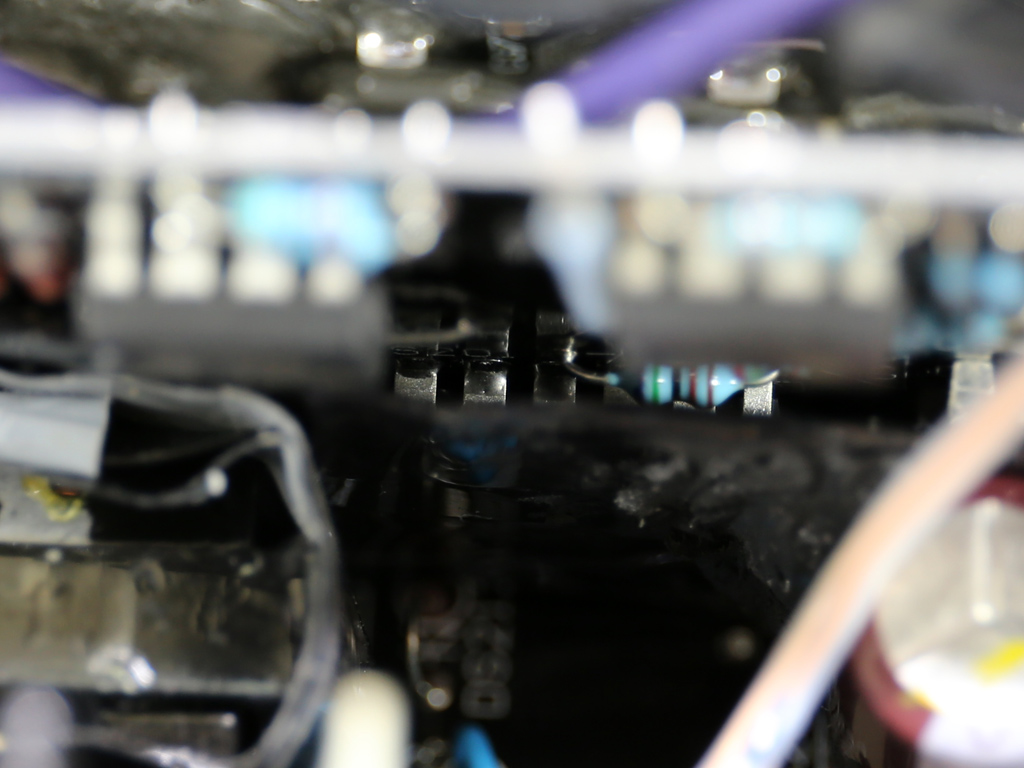
The LLC resonant converter, a Champion CM6901, is installed on a board that is partially hidden by the secondary side's filtering caps. On the same board, three op-amps, a TS358CD, an LM393NG and an LM359, are also installed.
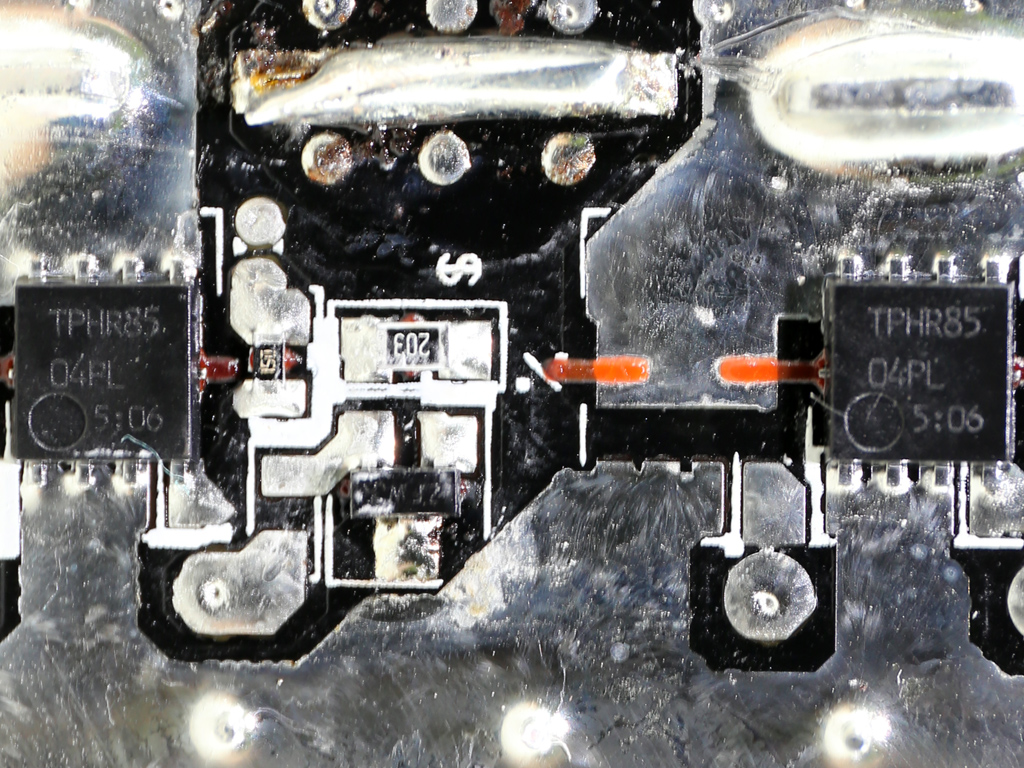

The +12V FETs are two Toshiba TPHR85 04PLs installed on the mainboard's solder side. They're mostly cooled by the chassis, and not by the small heat sinks installed right above them. These FETs don't look like the usual ones since they have eight pins instead of three. Four pins are used by the drain, three by the source and the last one is the FET's gate.
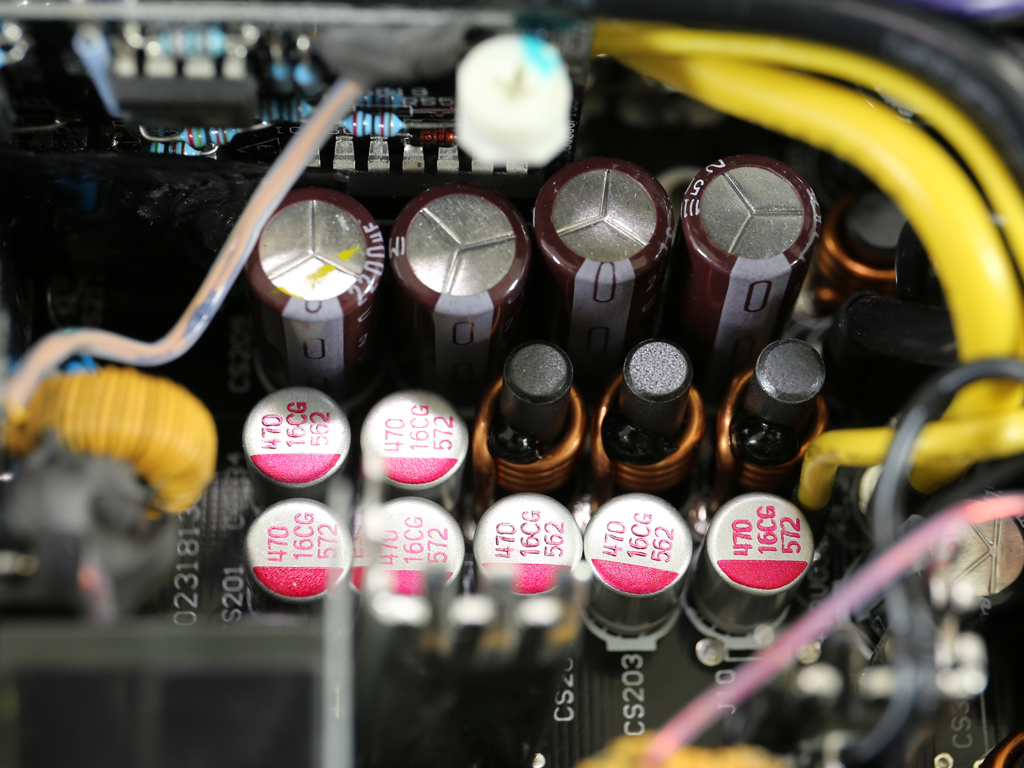
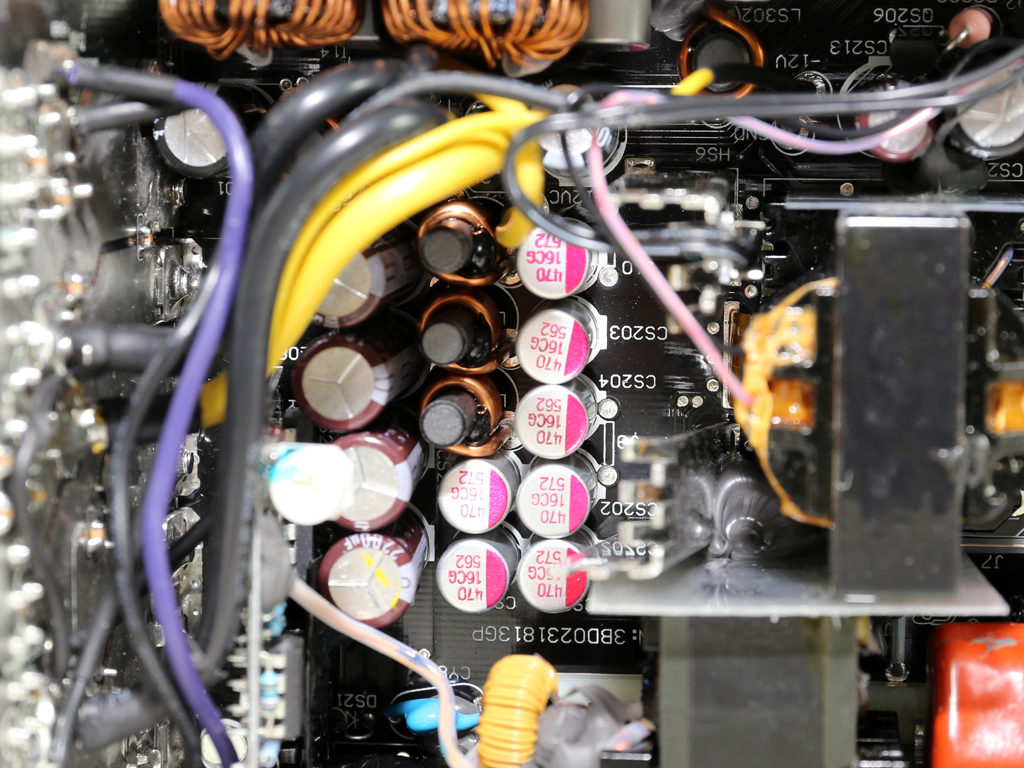
The secondary side's electrolytic filtering caps are provided by Chemi-Con (105 °C, KZE and KY series), while the polymer ones come from Teapo, a Taiwanese company. We can't accuse FSP of any marketing tricks since it clearly states that only the electrolytic caps are Japanese-made. However, polymer caps don't have a problem lasting thousands of hours under tough conditions since they don't contain any liquid material (electrolyte) but instead use solid electrolyte material. On top of that, Teapo is considered a decent capacitor manufacturer.
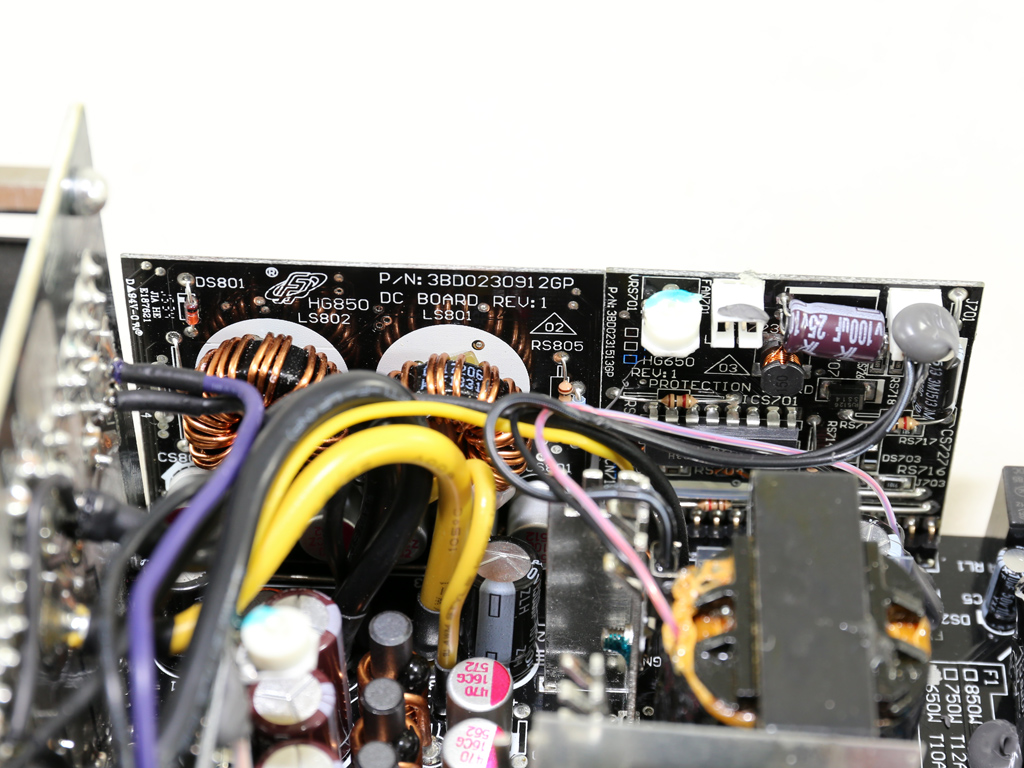
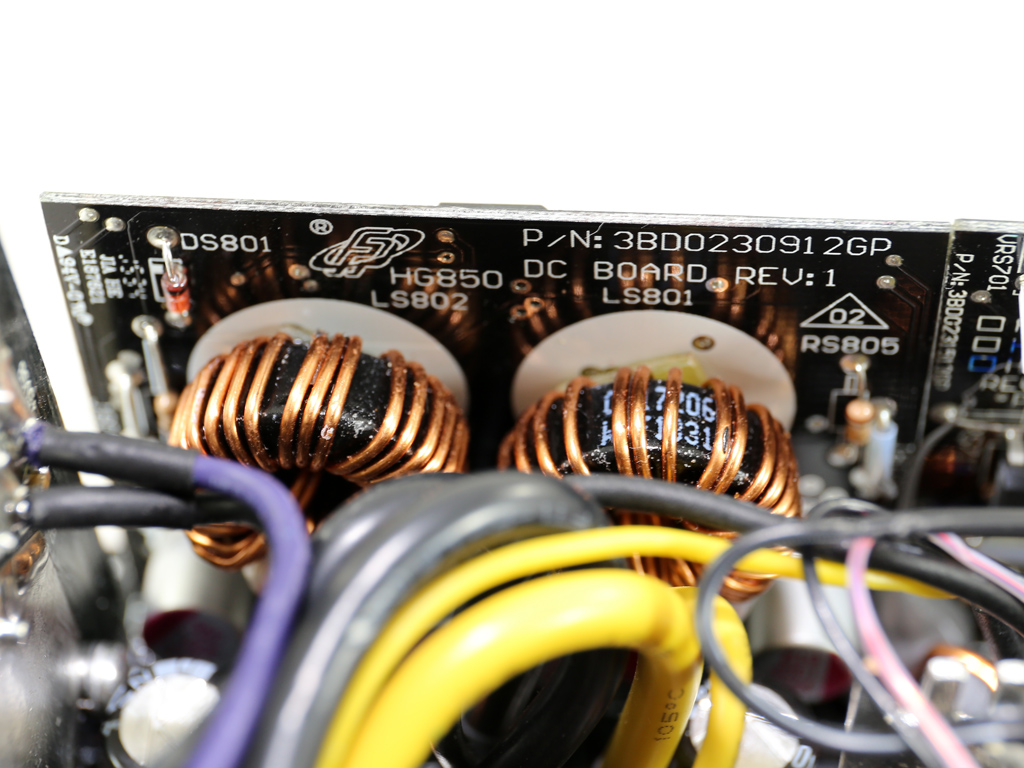

Both DC-DC converters are installed on a daughterboard on the secondary side. Each one uses three International Rectifier IRLR8726PbF FETs and the common PWM controller is an Anpec APW7159C IC. Although the minor rails are pretty strong, no heat sinks or bus-bars are used to cool them down. The FETs used are powerful, so they won't have to endure much stress anyway. In addition, the efficiency of these converters is very high, limiting the thermal load.
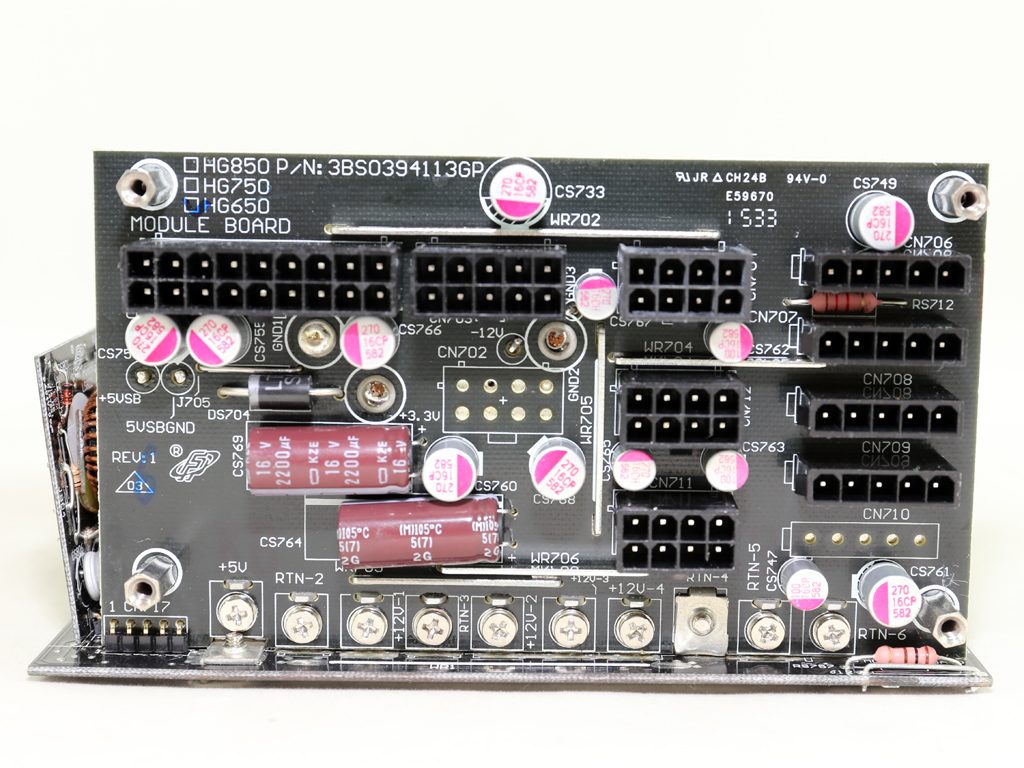
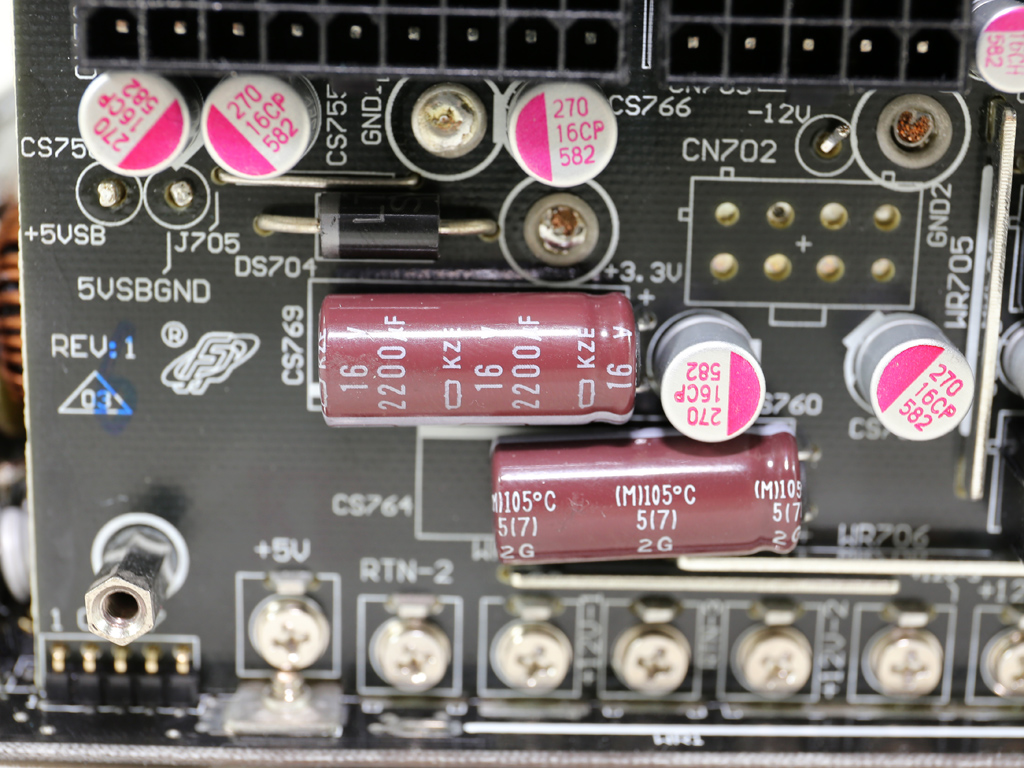
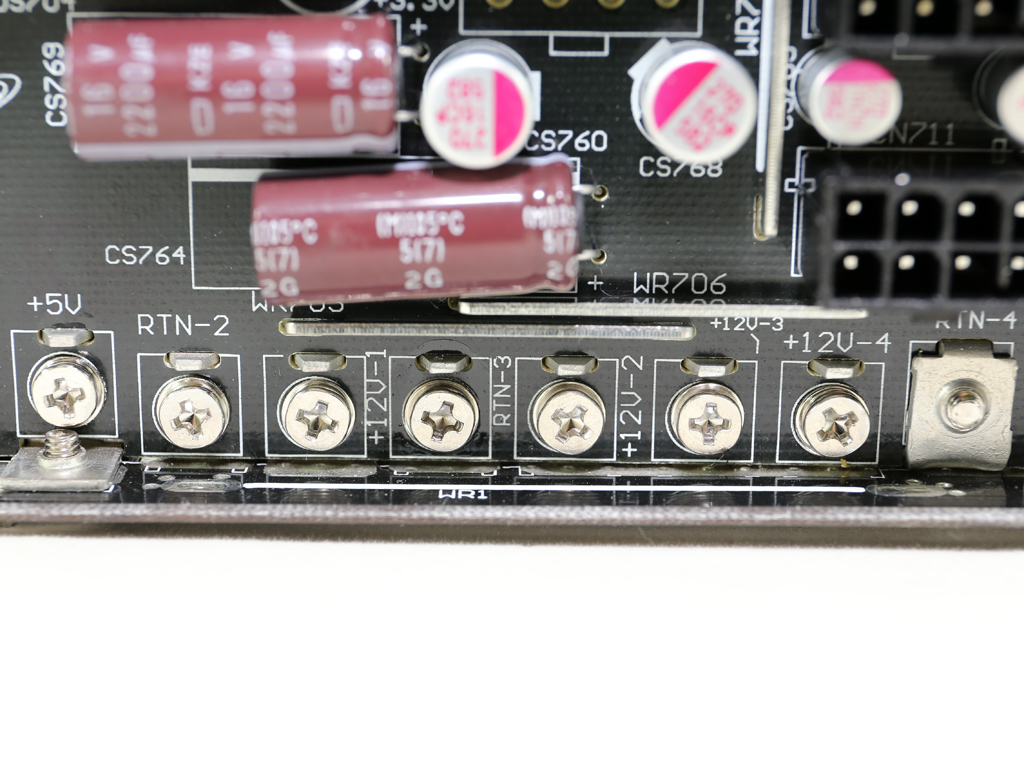
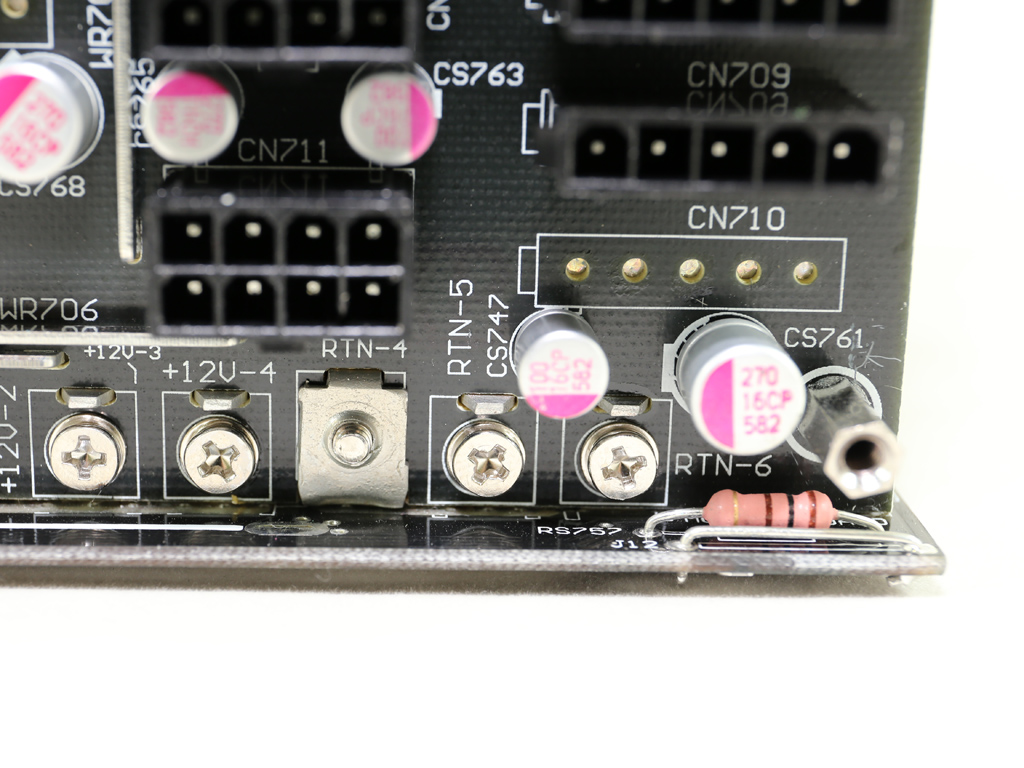

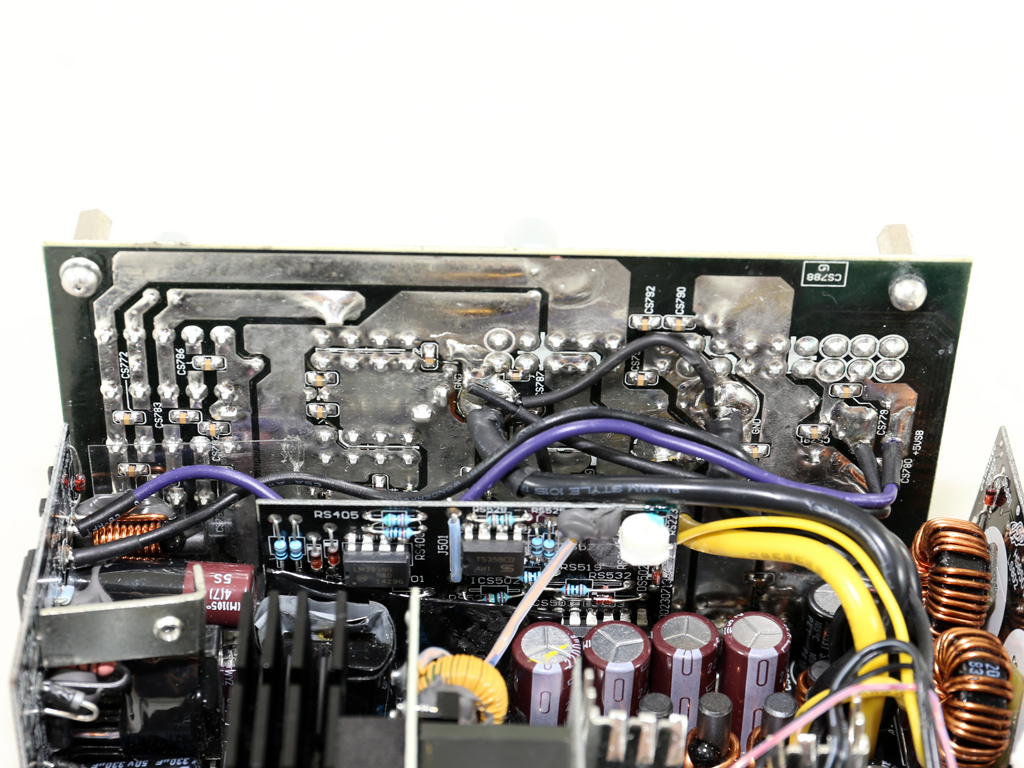
On the front side of the modular PCB, a number of Teapo polymer caps and a pair of electrolytic Chemi-Con caps provide some extra ripple filtering. In addition, several bus-bars connect this board to the main one, minimizing power transfer losses. The soldering quality isn't as nice on the back of the modular board.
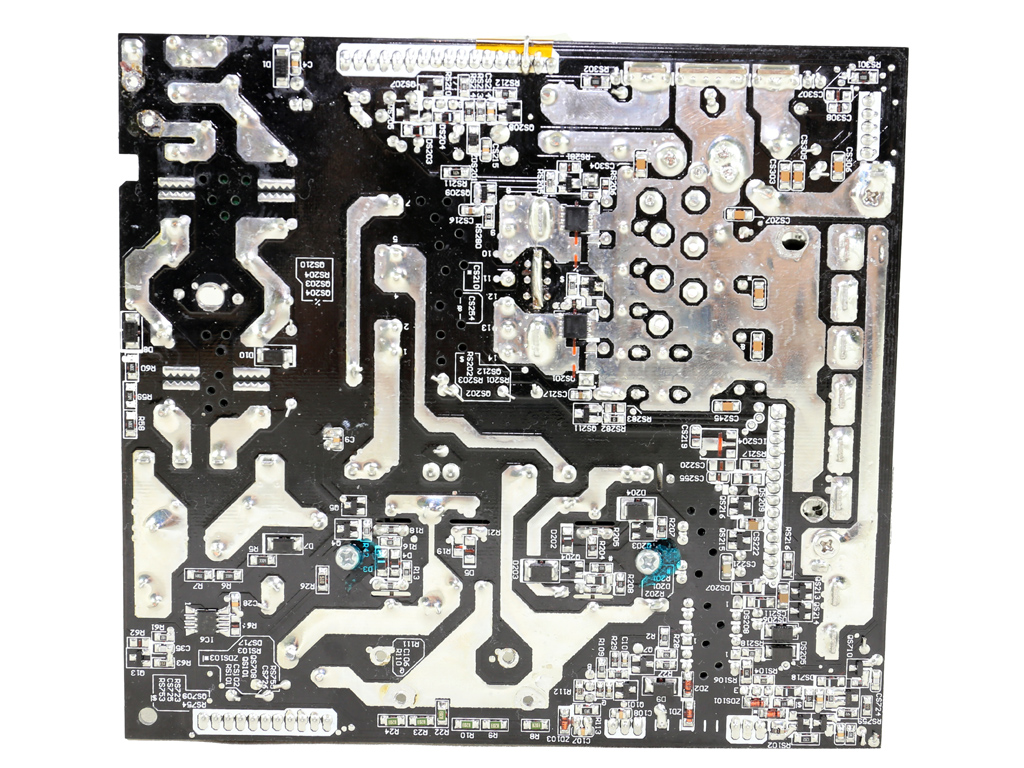

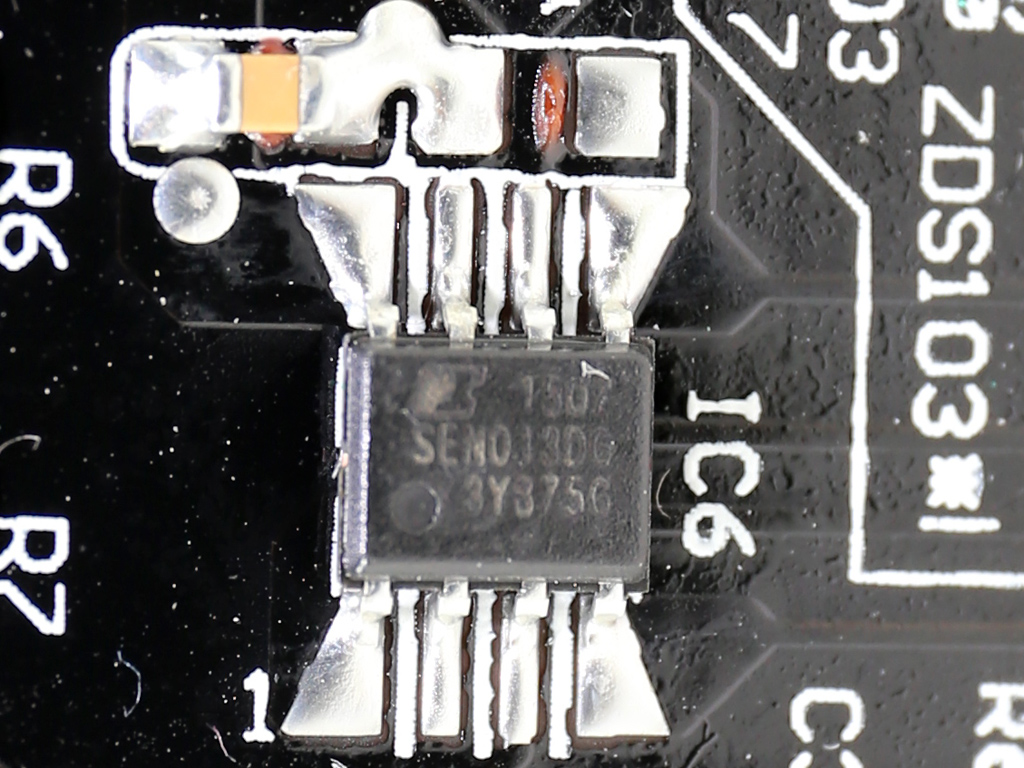

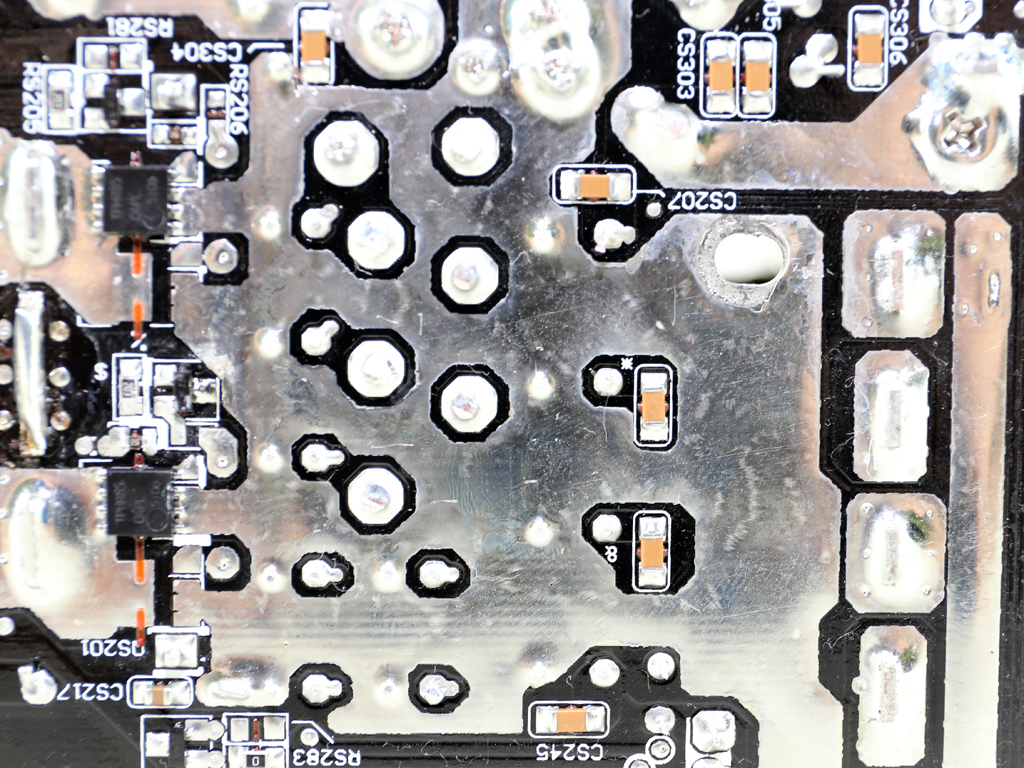

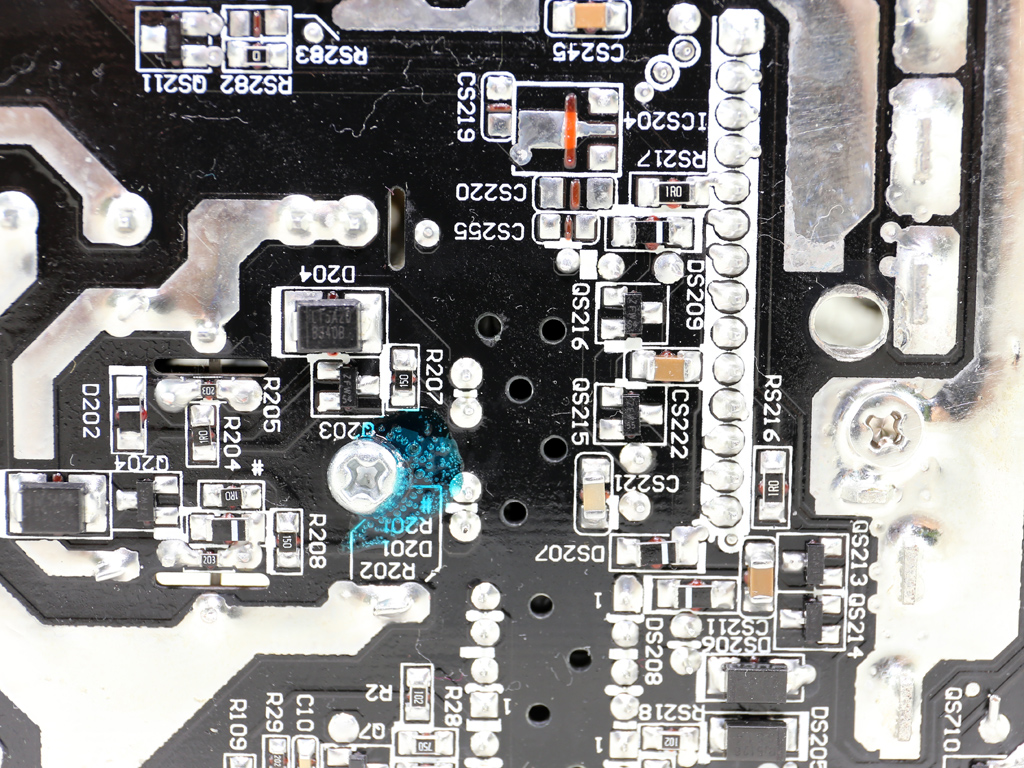
Soldering quality is better on the main PCB, except for a small problem illustrated below.

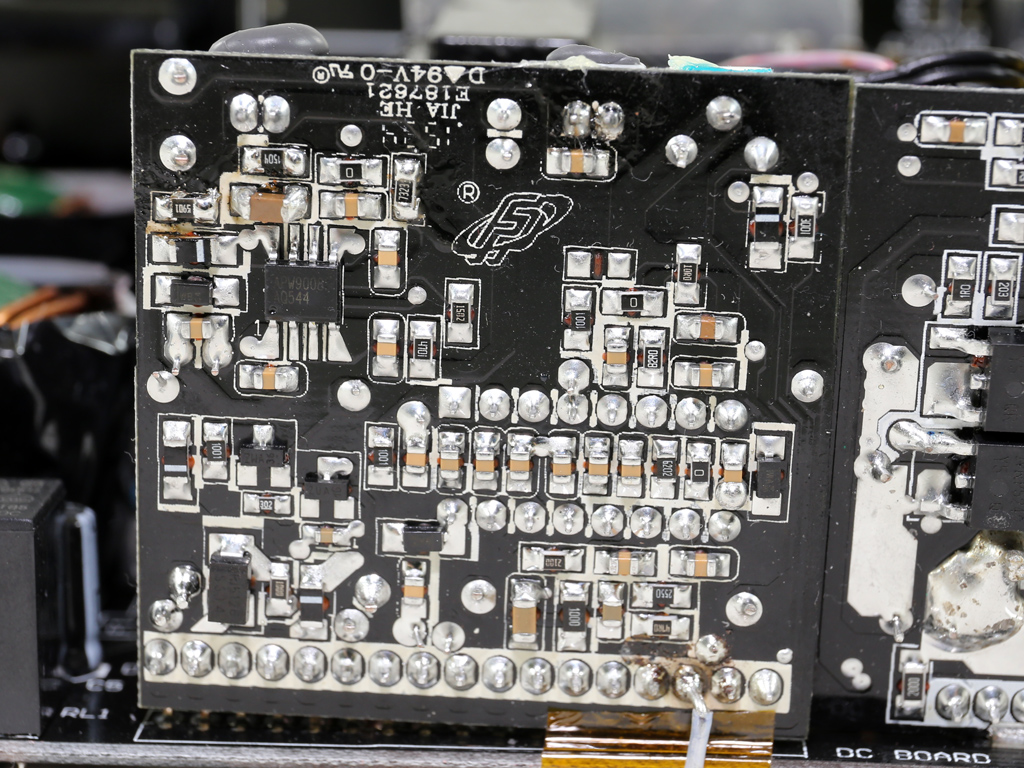

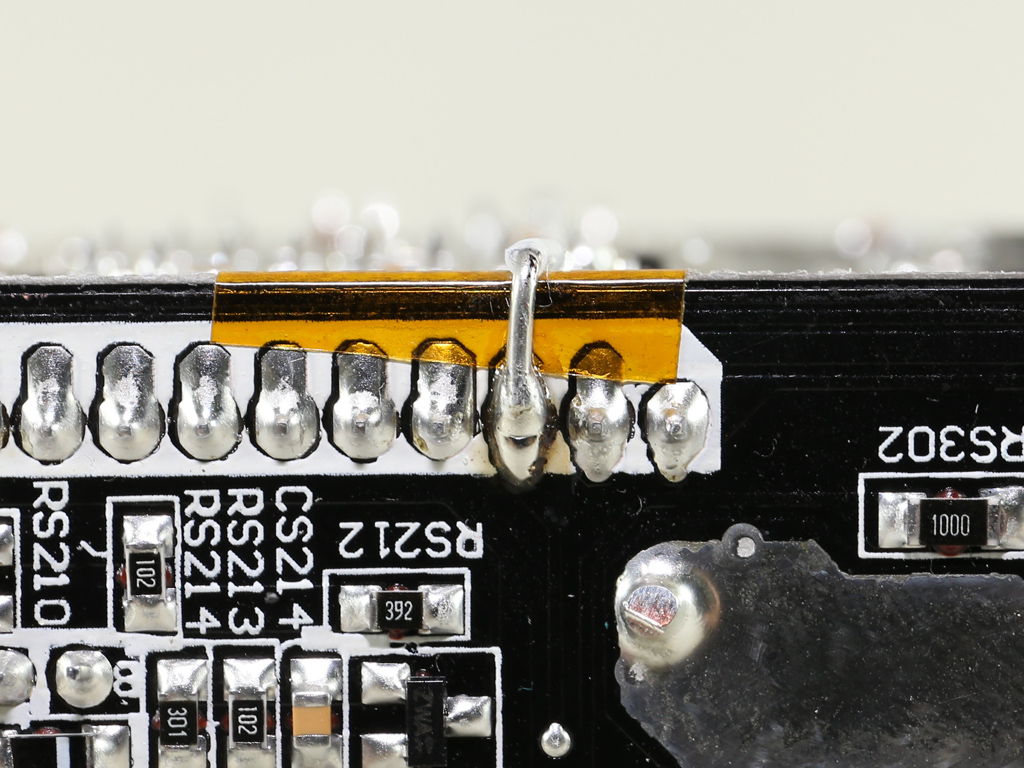
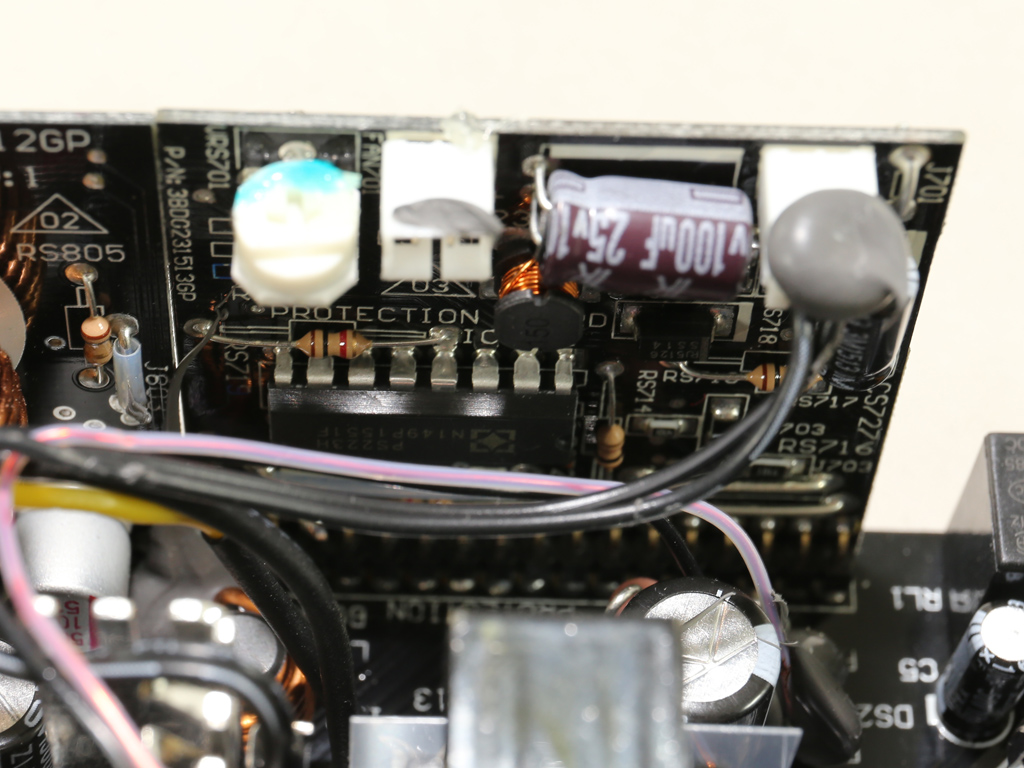
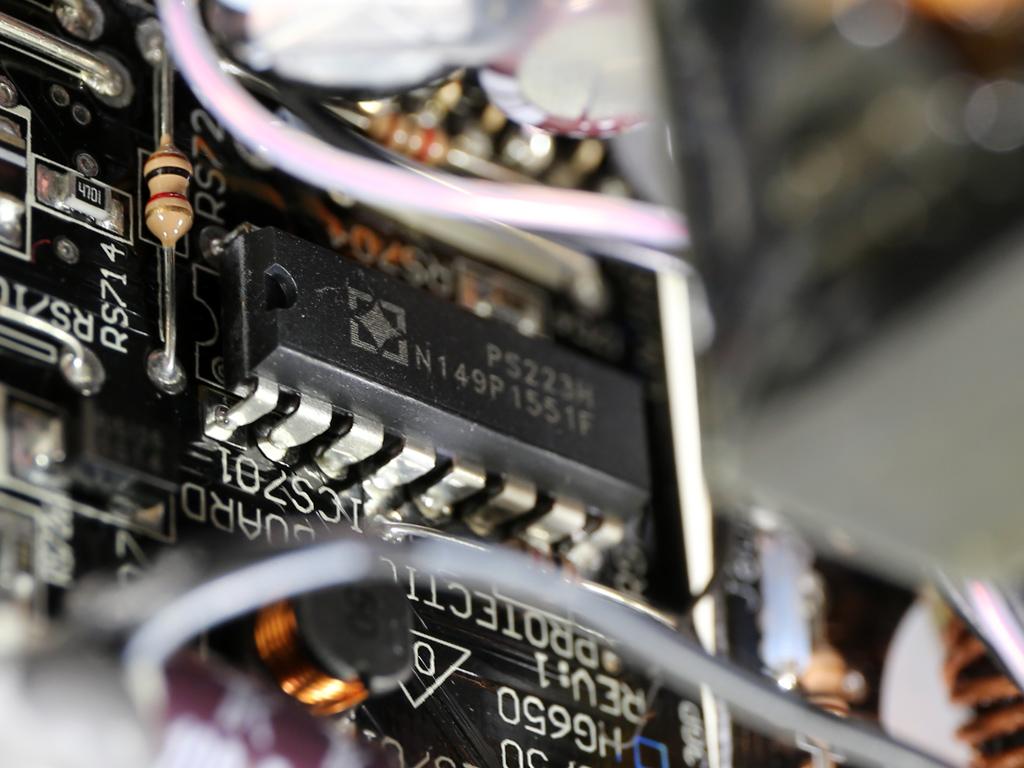
We spotted a bypass that doesn't look nice. Obviously there was something wrong with the initial PCB connection, so another route was used to connect the main PCB with the board that holds the protections IC, a SITI PS223. We suspect that this small quality issue would get fixed in the next production batch.


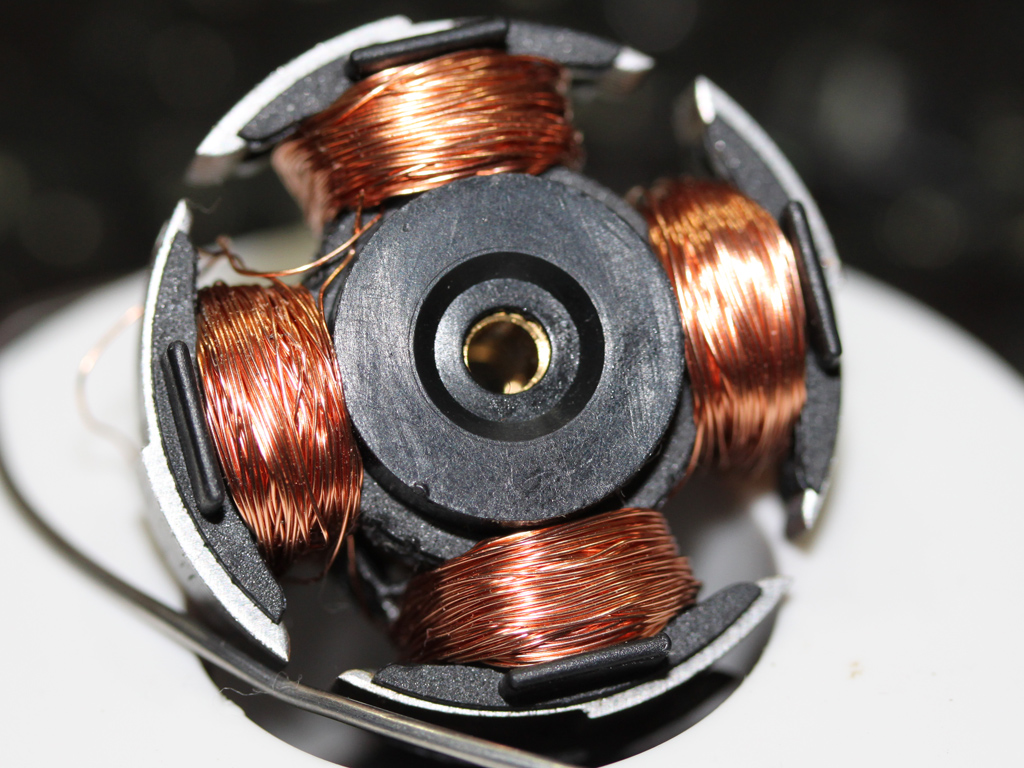
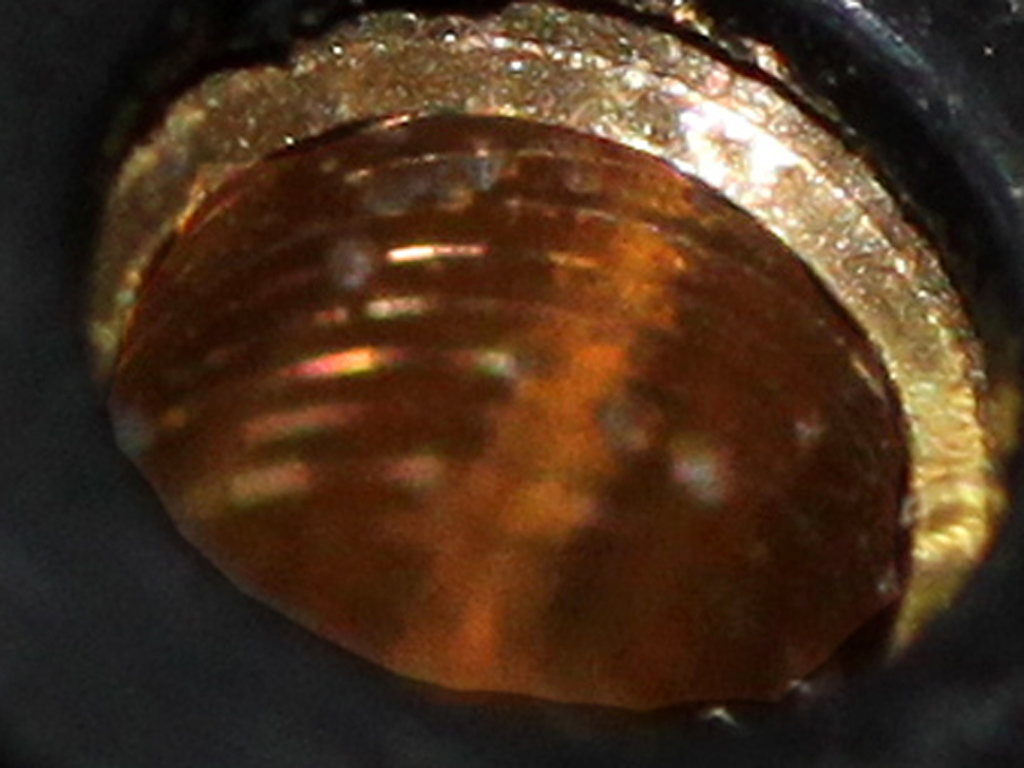
The fan is by Power Logic and its model number is PLA13525S12M (12V, 0.40A, 111.1 CFM, 41.6 dB[A]). It uses a Hydro Dynamic Bearing, which is similar to a Fluid Dynamic Bearing, offering a long lifetime and increased reliability. Although this is a high-speed fan, its relaxed profile keeps acoustics under control.
Current page: A Look Inside And Component Analysis
Prev Page Packaging, Contents, Exterior And Cabling Next Page Load Regulation, Hold-Up Time And Inrush Current
Aris Mpitziopoulos is a contributing editor at Tom's Hardware, covering PSUs.
-
Onus I see a Performance Per Dollar chart, but so far I've not been able to find the price of this unit. What is it?Reply
-
Aris_Mp ReplyI see a Performance Per Dollar chart, but so far I've not been able to find the price of this unit. What is it?
It is 90 bucks
http://www.newegg.com/Product/Product.aspx?Item=N82E16817104200&nm_mc=AFC-C8Junction&cm_mmc=AFC-C8Junction-VigLink2-_-na-_-na-_-na&cm_sp=&AID=10446076&PID=3821802&SID=il40akd6as0035wt00053 -
mrjhh I remember FSP being an OEM for older computer vendors like DEC, so they definitely aren't a newcomer to the field. I'm glad to see they know how to build a modern supply.Reply -
Onus IMHO FSP has always had a solid but "middle-of-the-pack" reputation; not anybody's first choice, but a lot better than a lot of the junk being sold. Even their Raider units that got very critical reviews were acceptable as budget units in light use. In big box PCs, I'd certainly rather see FSP than HEC or Bestec.Reply
-
jeffunit I see "op amp amplifier" mentioned several times in the review.Reply
What is an "op amp amplifier"
Doesn't amp stand for amplifier in this context, which expands to op amplifier amplifier?
-
Odd naming scheme for a power supply. Hope it doesn't confuse anyone into thinking water goes well with it. :PReply
Always good to see some of the larger if less well known manufacturers putting out quality units. -
jeffunit ReplyWhat is an "op amp amplifier"
short for operational amplifier
op amp is short for operational amplifier.
op amp amplifier is short for operational amplifier amplifier.
You need to pay more attention to what is written. -
turkey3_scratch Good performing power supply. In terms of voltages and ripple, beats the EVGA GS. I would never hesitate to recommend this unit, if it is priced well of course, which it already is not.Reply